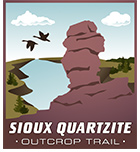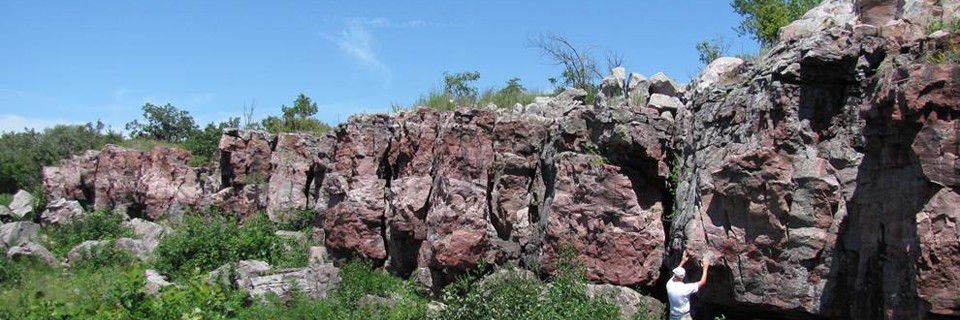At this site you’ll find a quartzite outcropping cliff, ranging from 10 to 15 feet in height, that runs the entire length of the 301-acre site. Beneath the quartzite is pipestone, this stone is sacred to American Indians and they have been quarrying the area for generations. The pipestone, a durable yet carvable stone, has been used for 3000 years to carve stone pipes. Pipes were used for ceremonial smoking and often such valued posessions they were burried with the dead. By the 19th century pipes were part of trades between whites and Indians. Today quarrying is done by Native Americans of any federally-recognized tribe and is done with respect for the earth. The Sioux traditionally leave food and tobacco near the group of boulders known as the Three Maidens as an offering for the land’s gift of stone.
Images from Pipestone Monument
Winnewissa Falls in Pipestone National Park.
Layers of pipestone and Sioux quartzite.
A Sioux quartzite formation called Leaping Rock.
Nicollet Rock, this contains the names from the J.N.Nicollet Expedition of 1838.
This petroglyph was originally found under the Three Maidens.








